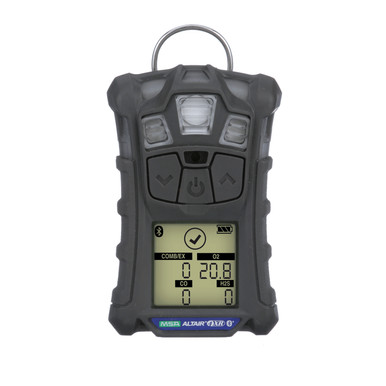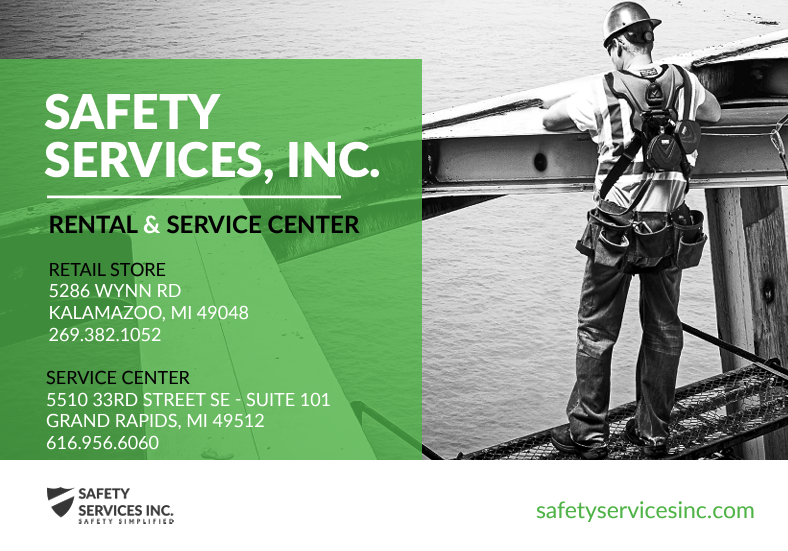4 Gas Monitors: How They Work & Why They Matter
Today's job sites are always changing, and the 4 gas monitor has become a vital tool for ensuring workplace safety. These devices detect and measure multiple atmospheric hazards simultaneously, providing essential data to safeguard workers.
In this guide, we'll explore the features of 4 gas monitors as well as their use and maintenance.
What Does a 4 Gas Monitor Detect?
A 4 gas monitor measures the concentration of various gases at the same time. Depending on the model, it can alert workers to several atmospheric hazards:
- Carbon Monoxide (CO): This colorless, odorless gas can be deadly in high concentrations. 4 gas monitors track CO levels to prevent the dangers of prolonged exposure.
- Hydrogen Sulfide (H2S): Found in industries like oil and gas, wastewater treatment, and agriculture, H2S is highly toxic. Even low-level exposure can cause respiratory issues and loss of smell.
- Methane (CH4): Methane leaks can lead to explosions, oxygen loss, and poisoning.
- Oxygen (O2): Monitoring oxygen levels is crucial as low levels can cause dizziness, confusion, and loss of consciousness.
- Combustible Gases: Gases such as propane and hydrogen can cause fires or explosions if ignited.
How to Use a 4 Gas Monitor
Always adhere to the manufacturer’s instructions. Here are some general guidelines:
- Power On and Self-Test: Ensure the monitor completes its self-test successfully.
- Correct Placement: Place the monitor where it can accurately sample air, close to gas sources and the worker’s breathing zone.
- Understand Alarms: Familiarize yourself with alarm thresholds and take immediate action if an alarm sounds, following established protocols and evacuating if necessary.
Diffusion Monitors vs. Sample Draw Monitors
Gas monitors are generally either diffusion-based or pump-based. Diffusion monitors rely on natural air movement to bring gases to the sensors, while pump-based models actively draw air samples, offering faster response times and better sensitivity for low gas concentrations.
Diffusion Monitors
These monitors are placed in the environment to be monitored. Gases naturally enter the sensor chamber, where internal sensors detect and measure the concentrations. They are ideal for open or well-ventilated spaces, providing continuous gas monitoring without the need for an external pump.
Advantages:
- Continuous monitoring of atmospheric hazards.
- Versatile for personal safety, industrial processes, and environmental monitoring.
Sample Draw Monitors
These monitors use a pump to draw air samples from remote locations, providing controlled and accurate air sampling.
Advantages:
- Flexibility: Sampling tubes can target specific areas, including confined spaces or areas behind barriers.
- Operation in Harsh Environments: Tubing allows sensor placement in extreme conditions where diffusion sensors might fail.
- Faster Response Time: Active air sampling reduces detection time.
Limitations:
- More complex and expensive, requiring additional components.
- Increased maintenance needs for pumps and tubing.
- Increased power consumption.
How to Bump Test a 4 Gas Monitor
Bump testing verifies a monitor's functionality by exposing it to test gas. Here's how to do it:
- Select a Test Gas: Use certified test gas for the specific gases your monitor detects.
- Setup: Connect the gas cylinder to the monitor’s bump test adapter securely.
- Initiate Test Mode: Follow the manufacturer’s instructions to activate bump test mode.
- Expose Sensors: Briefly expose the monitor to the test gas (around 10 seconds).
- Verify Readings: Ensure the monitor displays expected gas concentrations.
- Document Results: Record the test results for safety compliance and troubleshooting.
Our Gas Monitor Services
Whether you're looking at gas monitor services, confined space or fall protection equipment, we can help meet your needs. SSI specializes in the sale, service, rental and repair of gas monitors for MSA, Industrial Scientific, and BW Honeywell. We provide reliable support with a quick turnaround.
Our Service Center staff has over 20 years of experience in safety working on the same tools you use every day. We service more product categories than gas monitors! We also inspect and certify fall protection equipment, provide fit testing and conduct product demonstrations. Contact us today to find out how we can change the way you do safety!
Join our Save-ty Club for exclusive deals and safety news. Sign up here.
Share this article on social media and tag us for a special discount on your next purchase.
Let's spread the word on staying safe!
Disclaimer: The content provided on this website is for informational purposes only and is not intended to be a substitute for professional medical advice, diagnosis, or treatment. Always seek the advice of your physician or other qualified health provider with any questions you may have regarding a medical condition.
The information on this site should not be construed as establishing any safety standard or as providing directives for compliance with the Occupational Safety and Health Administration (OSHA) or any other health and safety regulatory agencies. Reliance on any information provided by this website is solely at your own risk. We do not accept any responsibility for any loss which may arise from reliance on information contained on this site.



